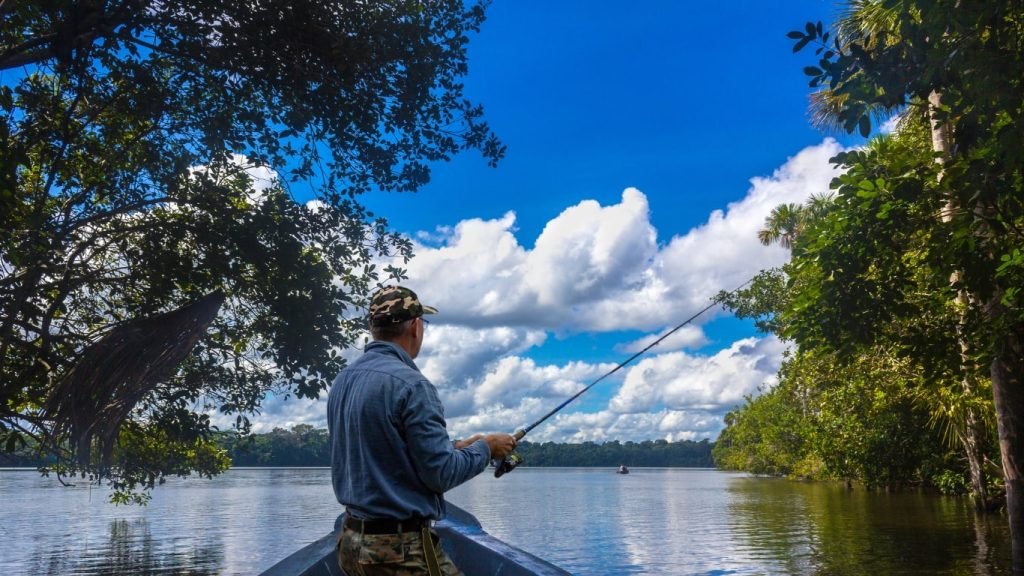Sport fishing in the majestic Tambopata River, located in the exuberant Amazon region of Peru, represents an unparalleled adventure for fishing enthusiasts. With its turbid waters, breathtaking scenery and amazing diversity of fish species, this river offers a perfect setting for anglers seeking thrills and challenges in the midst of untouched nature. In this article, we will dive into the charms and wonders offered by sport fishing in the Tambopata River, as well as the importance of practicing responsible fishing to preserve this invaluable aquatic ecosystem.
Fishing in the waters of the Tambopata
The waters of the Tambopata River offer an incomparable fishing experience. Here, anglers have the opportunity to confront species such as the Payara, known for its strength and aggressiveness, as well as the gigantic Pacu piranha and a variety of zungaros and motas (Catfish) in all their species.
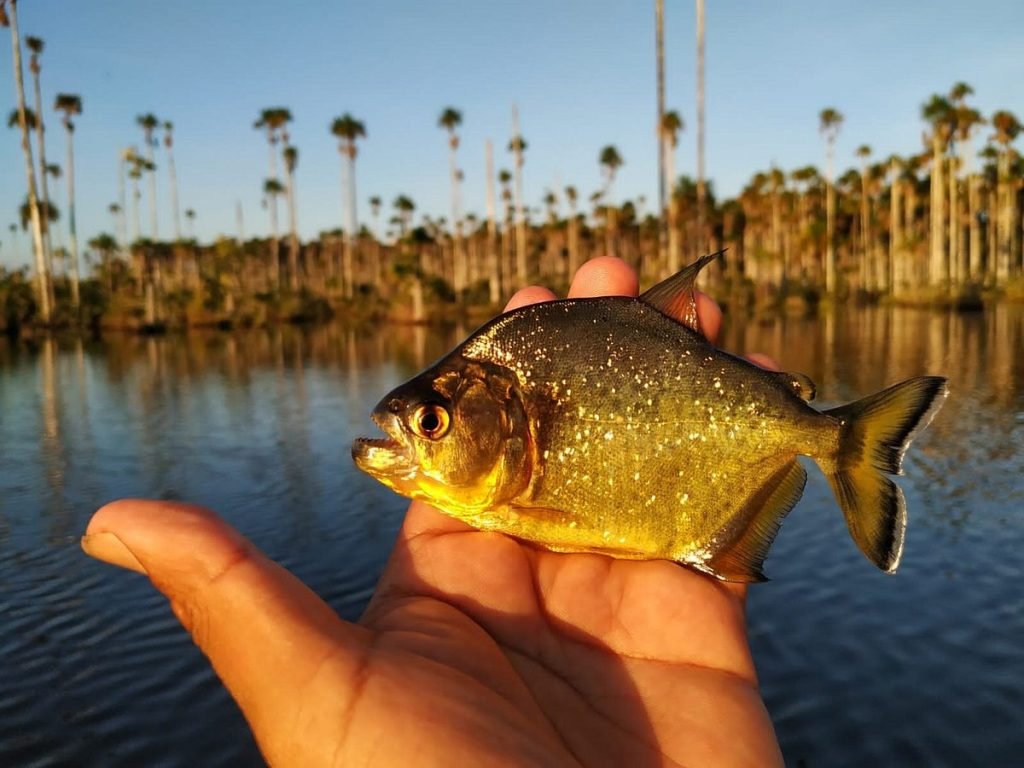
Deep in the Amazon jungle, near the majestic city of Cuzco, lies an incomparable natural paradise: the Tambopata National Reserve. With its creation in 1990, this reserve has captured the imagination of adventurers and nature lovers alike. In an area covering 1.5 million hectares, an unparalleled biodiversity unfolds, making Tambopata a dream destination for those seeking authentic and exciting experiences in nature.
Tambopata Fishing: A Unique Adventure
Within this scenario of exuberant nature, fishing stands out as an exciting and challenging activity. The rivers that run through the reserve, such as the Tambopata, offer an ideal habitat for a wide variety of fish such as the imposing Payara. Fishing in Tambopata promises thrilling moments of bites, fights and jumps, all framed by the wild beauty of the Amazon rainforest.
The Abundance of Fish Species: Treasures of the Tambopata River
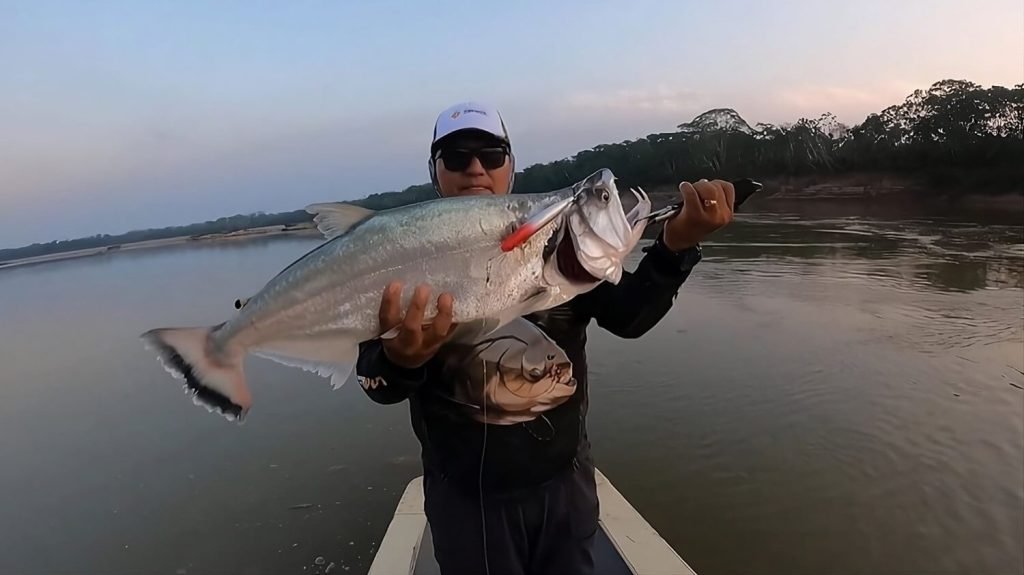
The Tambopata River is renowned for hosting a wide variety of fish species, from the dreaded piranha to the imposing giant catfish. These fascinating aquatic inhabitants offer anglers the exciting opportunity to test their fishing skills and techniques while immersed in an incomparable natural environment.
These rivers are home to a variety of incredible fish. Here is some information about some of them:
Sungaro (Tigrinus Brachyplatystoma):
- This freshwater fish is known for its majestic appearance and imposing size. It can reach considerable lengths and is an exciting challenge for anglers.
Paco (Piaractus brachypomus):
- The paco, also called “carachama”, is a large and robust fish found in the waters of Tambopata. Its meat is appreciated for its flavor and texture.
Maidenhair (Corsi julis):
- The maiden is a freshwater fish with an elegant shape and vibrant colors. It is a popular target for anglers because of its beauty and taste.
Sungaro cougar (Corris):
- This fish, also known as “sungaro,” is a formidable predator. Its fierce appearance and vigorous fighting make it an exciting challenge for anglers.
Stingray (Batoidea):
- Stingrays are fascinating creatures that glide through the waters of Tambopata. Although they are not the main target for fishing, their presence adds a touch of mystery to the environment.
Eel (Electrophorus electricus):
- The electric eel is famous for its ability to generate electric shocks. Although not commonly caught, its presence in the rivers is intriguing.
Catfish (Pimelodus blochii):
- Catfish are bottom-dwelling fish found in abundance in Tambopata. They are prized for their meat and their fighting endurance.
Canero (Vandellia cirrhosa):
- The canero, also known as “candiru”, is a small but notorious fish. Its fame comes from its habit of parasitizing other fish.
Chambira (Hydrolocus sconberoides):
- The chambira is a unique looking fish with an elongated shape. Its fishing can be challenging due to its elusive behavior.
Gamitana (Colossoma macropomum):
- The gamitana is a large and tasty fish found in the waters of Tambopata. It is a popular target for local fishermen.
Piro (Pterodoras granulosus):
- This fish, also known as “pirarucu”, is one of the largest fish in the region. Its imposing size and tasty meat make it a desired target for fishermen in Tambopata.
Achacubo (Sorubimichthys planiceps):
- Achacubo is a robust looking fish with a vigorous fight. It is an exciting challenge for experienced anglers.
Mota (Pinirampus pirinampu):
- The mota is a freshwater fish with a distinctive shape. Its fishery is appreciated for its taste and texture.
Picó de pato:
- This fish, also known as “patillo”, is small but agile. It is popular among local fishermen.
Ashara (Leiarius marmoratus):
- The ashara is an interesting looking fish with dark spots on its skin. Its fishing is a unique experience.
Lisa (Leporinus friderici):
- The mullet is a freshwater fish with an elongated shape and a spirited fight. It is a common target for anglers.
Tarpon (Brycon amazonicus):
- Tarpon is a fast and vigorous river fish. Its fishing is exciting due to its strength and speed.
Maparate (Hypophthalmus edentatus):
- The maparate is a large fish with a distinctive shape. Its meat is appreciated in the region.
Piranha (Serrasalmus elongatus):
- Piranhas are known for their ferocity and sharp teeth. Although they are often portrayed as dangerous creatures, they are an integral part of the river ecosystem.
Essential Equipment for Fishing in Tambopata
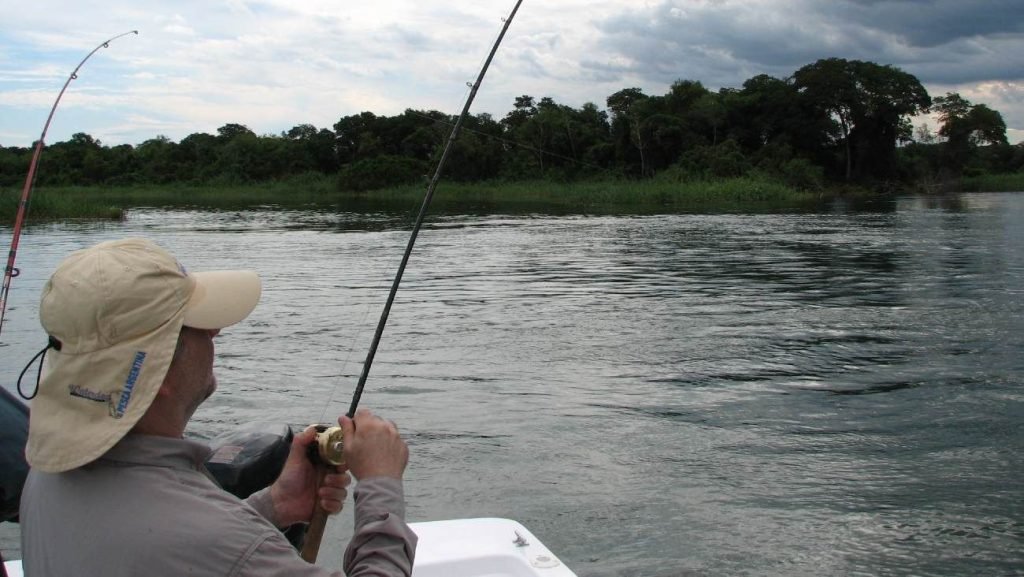
Proper preparation is key to get the most out of the Tambopata fishing experience. Below, we detail the essential equipment that every angler should have in mind:
Fishing Rods:
- It is recommended to pack at least 2 medium-heavy to heavy action rods, 7 ½ to 9 feet, for both bait and spinning.
- For fly fishermen, a slightly heavier rod, 9 to 10 feet, is suggested.
Reels:
- At least 3 reels rated for 200 yards of 20-pound line, such as Shimano Baitrunner 4500 or 6500, Fin Nor 12 or Penn 6500.
Lures:
- A variety of lures is recommended, such as Rapala Magnum, Rapala Countdown, Rebel Fasttrac, Spoonbill and bigs windcheater, especially designed for fast water.
Other Equipment and Personal Items:
- Adequate clothing to protect from the sun and insects.
- Comfortable and resistant footwear.
- Sun protection, insect repellent and toiletries.
- Photographic equipment to capture the unforgettable moments of fishing in Tambopata.
Tambopata Fishing Season and Tours
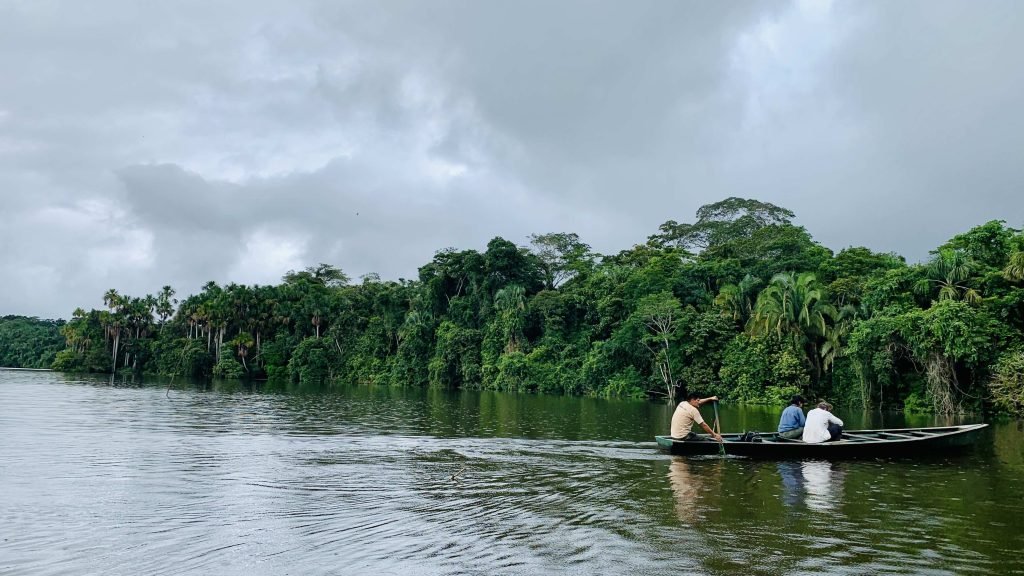
The fishing season in Tambopata extends from the beginning of July to the end of October, with August, September and October being the most recommended months for this activity. During this period, numerous fishing tours offer visitors the opportunity to explore the most fascinating corners of the reserve in search of exciting catches.
Travel Itineraries and Included Services
Fishing tours in Tambopata usually last 8 days and 7 nights, with 5 days dedicated exclusively to fishing. These packages usually include services such as reception at the airport, accommodation in exclusive lodges and transportation to the designated fishing spots. In addition, they will have the assistance of professional guides who will accompany the group throughout the trip, ensuring a safe and enriching experience for all participants.

